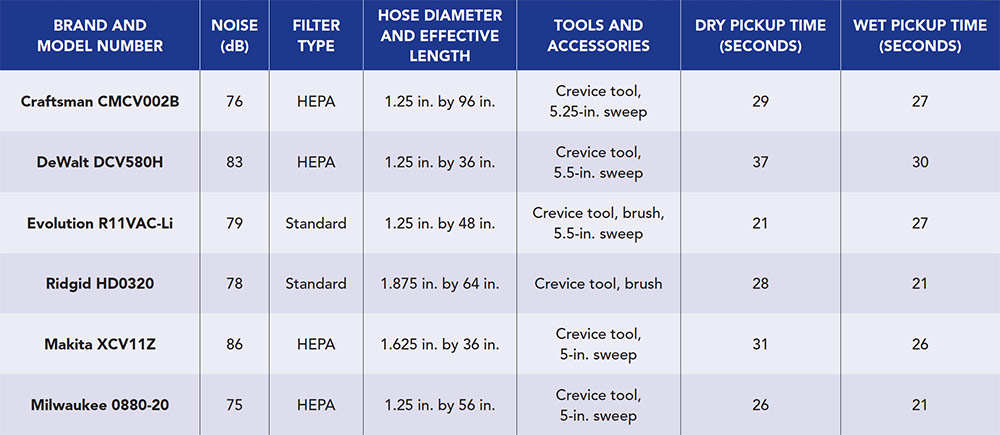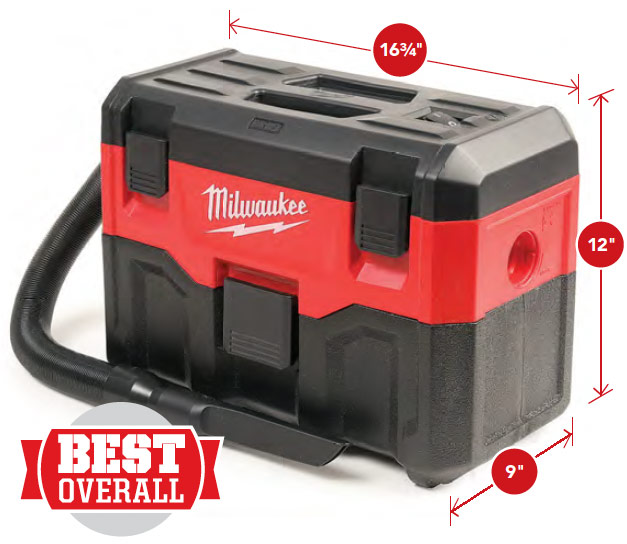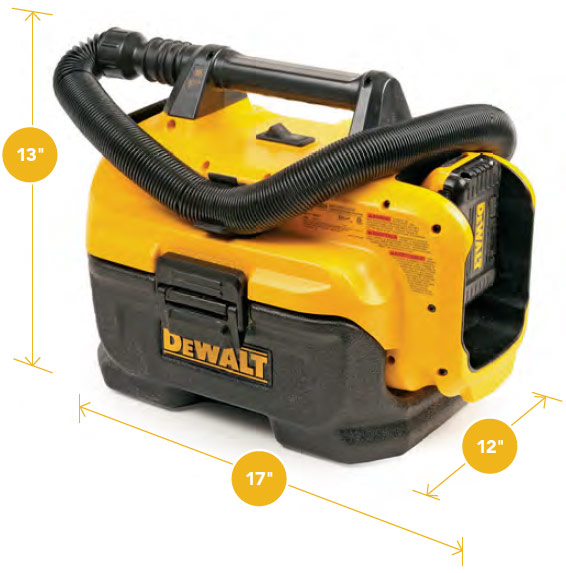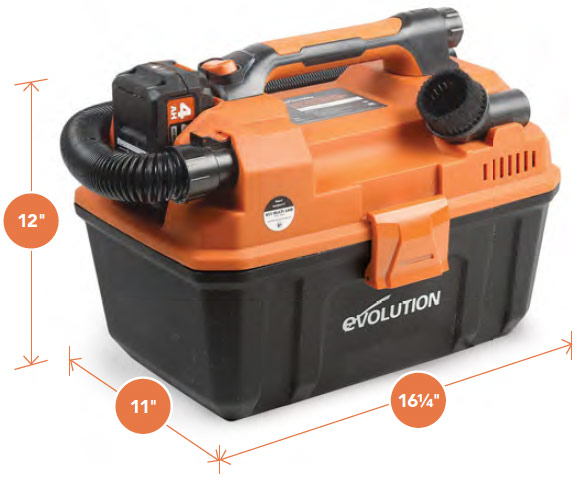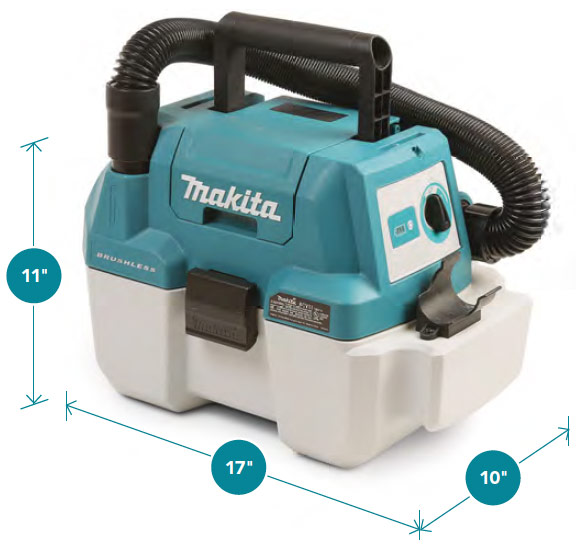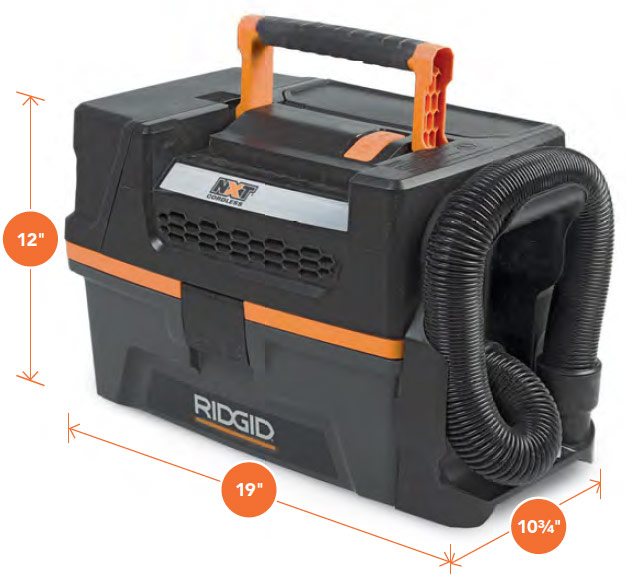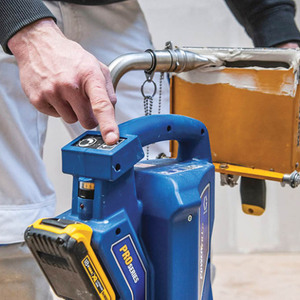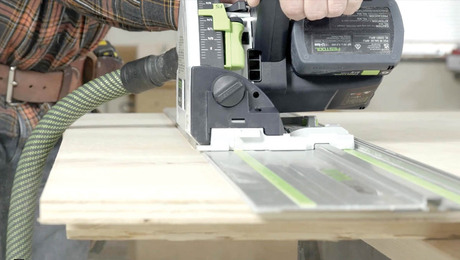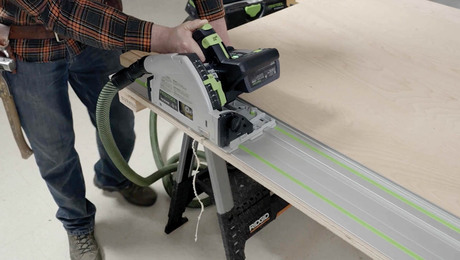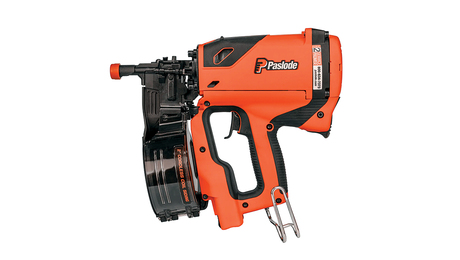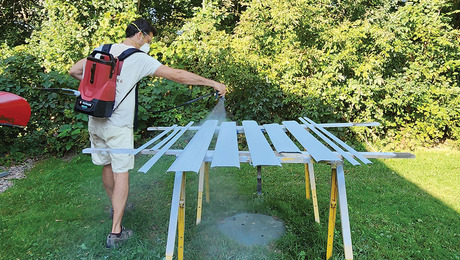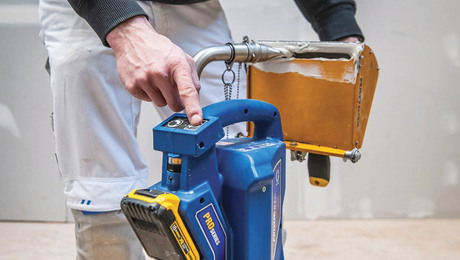Compact Cordless Shop Vacs
These superportable, 18v, toolbox-shaped vacuums make cleanup fast and easy.
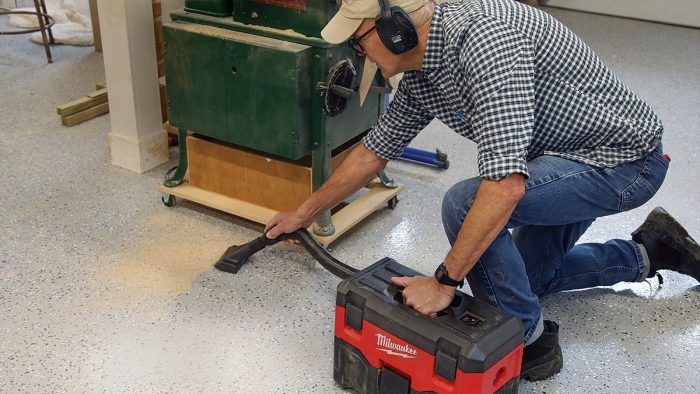
Synopsis: Powered by the same Li-ion batteries used by other tools, these small wet/dry vacs can go just about anywhere. They are therefore ideal for tasks where a full-size vac would be unwieldy or impossible to maneuver. Finish carpenter Tim Snyder compares the features of six of these cordless shop vacs, then shares the results of his testing. Each vac underwent tests for both wet and dry pickup. Although he believes the best choice of a small vac is the one whose batteries you already own, he does share his picks for best overall and best value.
My favorite tools usually fall into two categories: those that enable me to do better-quality work, and those that simply make work easier. Cordless shop vacs fall into the latter category, but that doesn’t lessen their value. Now that I know about these nimble tools, I’ll never have to stumble through stairway cleanup with a big corded vac, or resort to a broom and dustpan when no electricity is available. There are plenty of other cleanup jobs ideally suited to these small vacs—like sucking up spilled water from a P-trap, vacuuming dust from a small drywall repair, or handling any cleanup task that doesn’t require the capacity or run time of a large corded vacuum. One other benefit worth mentioning is that since these compact cordless vacs arrived at my house, it’s never been easier to keep my work van free of debris.
The vacs in this review share some notable features. They all use lithium-ion battery packs that power other tools in a brand’s cordless family—saws, drills, sanders, impact drivers, etc. That’s why most of these vacs are sold as “tool only.” All of these vacs are wet/dry models, and each one comes with a hose and a couple of pickup tools that stow onboard. The vacs reviewed here can also be used as small blowers by inserting the hose end in the outlet hole.
Comparing performance and features
In putting these vacs through their paces, I was able to assess other characteristics that factor in overall effectiveness and ease of use. For example, all but two of the vacs have big on/off switches you can click with the same hand that grips the handle, even with gloves on. The lower “tank” half of the vac can be easy to empty and clean, or more troublesome. A tank that has an inner lip along its top edge tends to trap dust and liquid. For more details, see the comments on the individual vacuums in this article.
These compact vacs come in two styles. The most common configuration keeps the flexible hose and pickup tools stowed on the vac’s top and/or tank, where they’re accessible and clearly visible. The storage is clever: Sweep attachments clip into plastic recesses, and cylindrical crevice tools stow in hollow handles.
The Ridgid and Milwaukee vacs look different, because they really take the “toolbox” designation literally. No tools are visible, because they’re stowed in dedicated spots beneath a hinged lid. Therein lies the tradeoff: The toolbox configuration makes misplacing or damaging key components less likely, and it allows these vacs to stack and store easily. But retrieving the hidden tools adds an extra step.
MILWAUKEE 0880-20
CAPACITY: 2 gal. WEIGHT: 10.1 lb. PRICE: $130
This sleek, sturdy little box doesn’t give many clues about its function. Beneath the flat lid with its inset handle and large switch you’ll find a lengthy hose, a couple of tools, and the same battery used in a large family of cordless tools. Ultra compact but with plenty of power and the quietest operation in the test, this vac turned out to be my top model. My favorite feature is its under-lid storage. I don’t have to worry about a hose or pickup tool getting knocked loose, damaged, or lost.
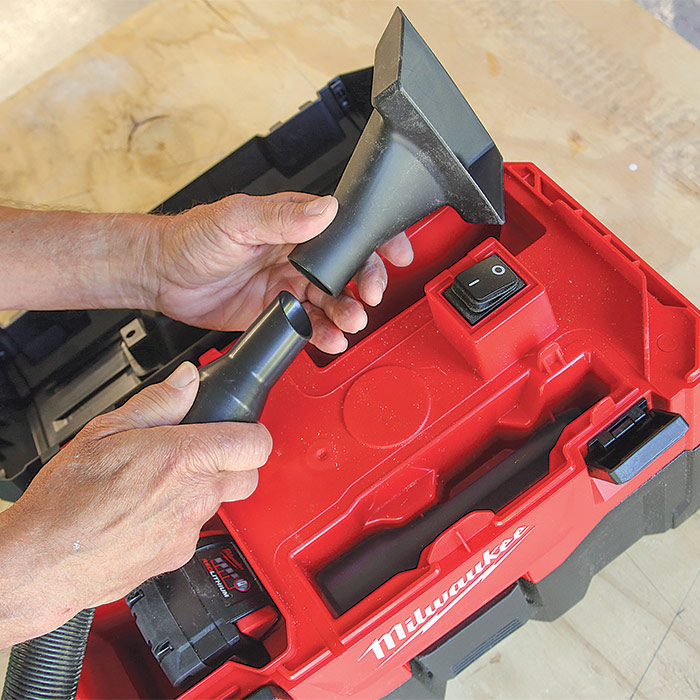
CRAFTSMAN CMCV002B
CAPACITY: 2 gal. WEIGHT: 9 lb. PRICE: $100
I like the small size, light weight, and straightforward design of this tool. It’s very similar to the DeWalt vac, but with faster pickup, a lower price, and a tank that’s easier to empty. The only thing I’d change on this tool is the tiny on/off switch, which is difficult to operate if you have fat thumbs like I do. In terms of value for money, the Craftsman’s long hose, clever tool storage, and solid performance make it a value standout.
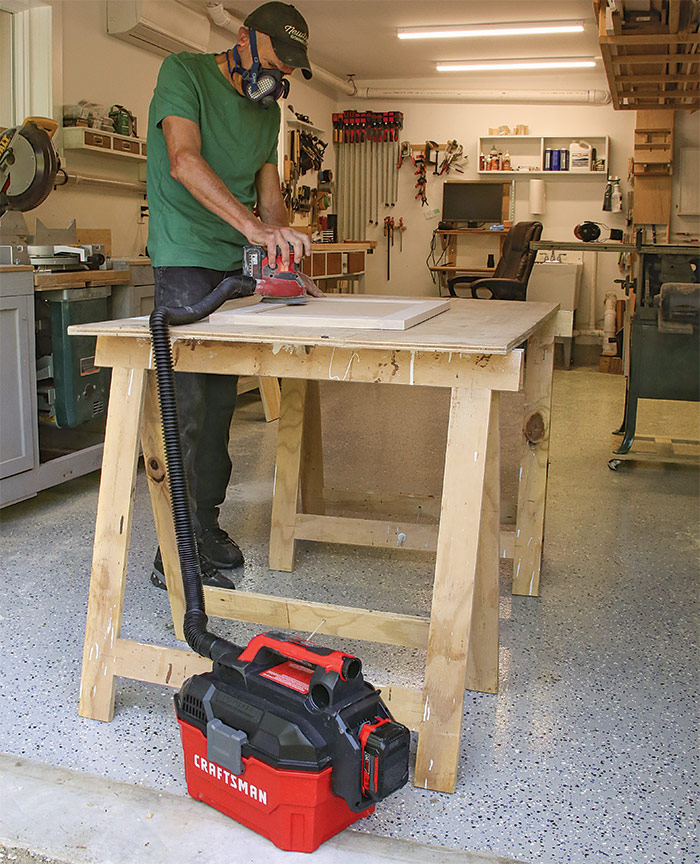
DeWALT DCV580H
CAPACITY: 2 gal. WEIGHT: 9.1 lb. PRICE: $160
Very similar to the Craftsman, DeWalt’s vac offers the same advantages of compact size, light weight, and clever onboard tool storage. One notable difference is the substantial lip on the DeWalt’s tank, which makes it more difficult to empty completely. DeWalt’s optional dust-extraction adapter (DWV9000; $15) is worth buying. It adapts the 1-1⁄4-in. hose end to common power-tool dust-port connections.
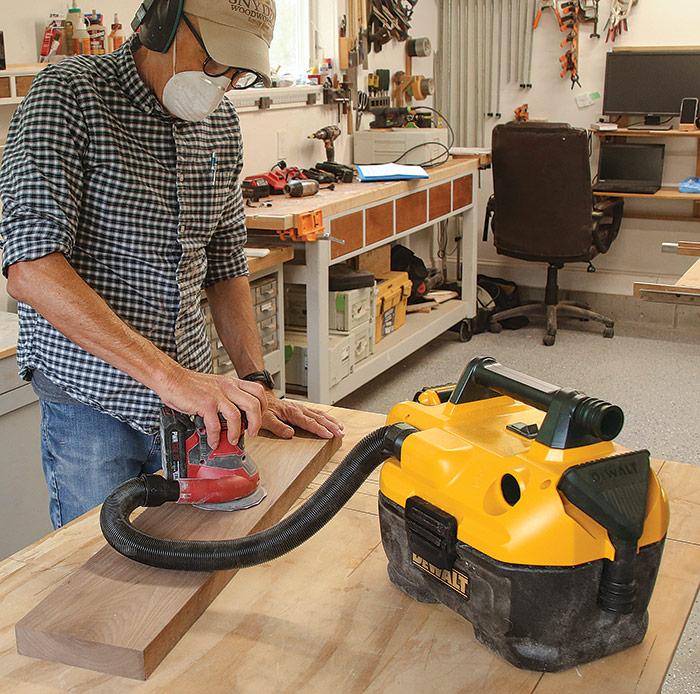
EVOLUTION R11VAC-LI
CAPACITY: 3 gal. WEIGHT: 7.4 lb. PRICE: $90
This vac is the least expensive in the test, and despite its medium size (compared to other vacs) and light weight (the lightest in the test), it had superfast pickup times. It’s the only vac that comes with three onboard pickup tools. The oversize on/off switch, positioned perfectly where you grip the handle, is a real ergonomic bonus, especially if you’re wearing gloves. This model was a best-value contender, but it was beaten by the Craftsman’s long hose.

MAKITA XCV11Z
CAPACITY: 2 gal. WEIGHT: 9.8 lb. PRICE: $225
On this vac, the on/off switch is a dial that lets you select one of two speeds. The #1 setting, designed for a longer run time, left some of the heavier nuts and screws on the floor. The Makita has three filters: pleated paper, foam, and fabric. Keeping all three in place when using the vac for dry pickup eliminates the task of knocking dust from the pleated filter. But the Makita’s tank has a large, inward-turned lip, making it more difficult to empty.
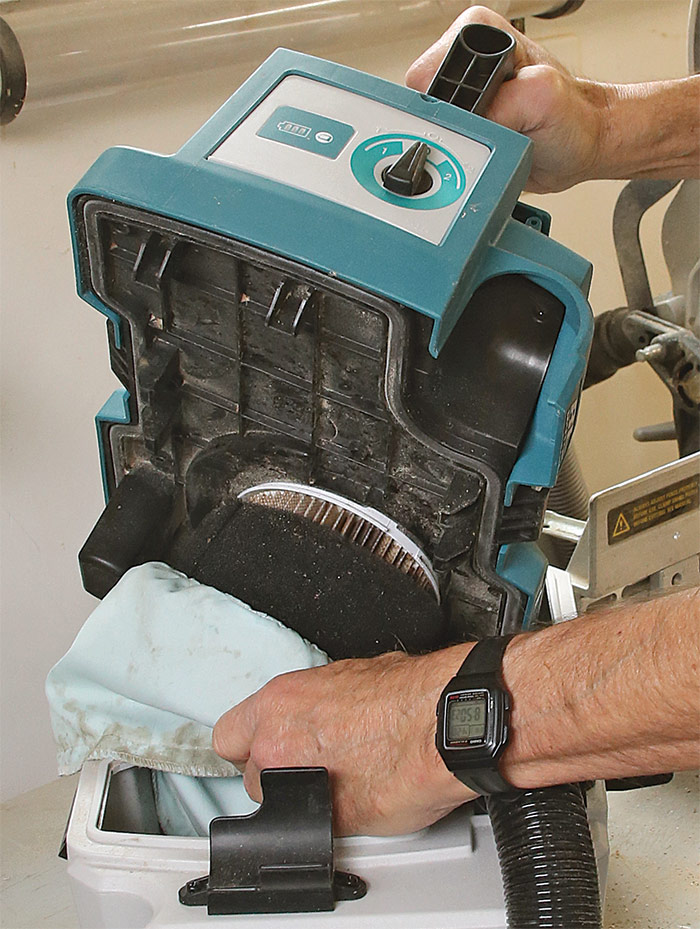
RIDGID HD0320
CAPACITY: 3 gal. WEIGHT: 11.5 lb. PRICE: $130
Like the Milwaukee, this model stows pickup tools inside the lid, maintaining a boxy shape that can easily be stacked with other tools. Pickup speed turned out to be just average in spite of the vac’s larger-diameter hose, and this model is heavier (and larger) than the other vacs in the test. Kudos to Ridgid for including a brush attachment and for an innovative built-in dustpan with suction.
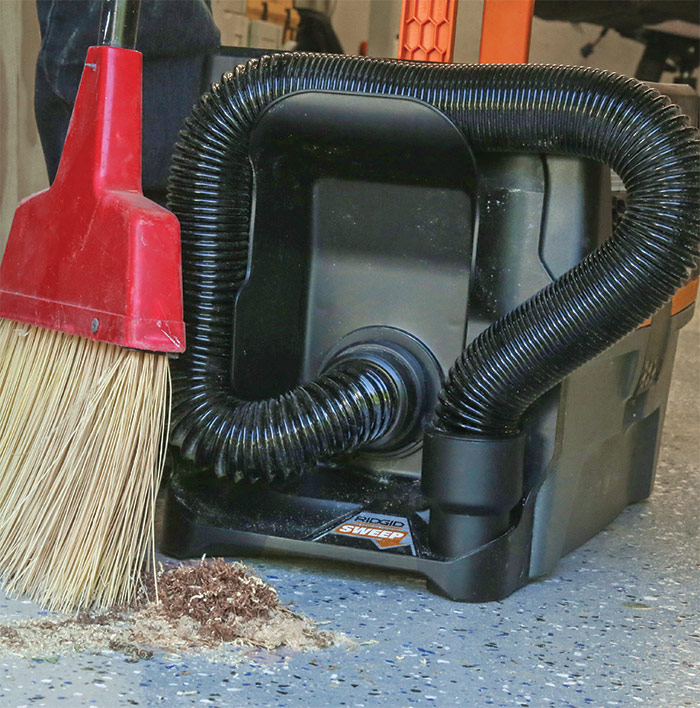
When the dust settles …
The easiest way to pick from this pack of vacs would be to stick with the brand whose batteries you already own. All of the models reviewed here will easily handle the small cleanup tasks that don’t merit lugging around a big corded vacuum. Assuming a battery that’s close to fully charged, you won’t need to worry about running out of power unless you’ve got a cleanup job that takes hours rather than minutes. If you deal with drywall dust or other fine particulates, it makes sense to choose a model equipped with a HEPA filter. With a little tinkering and some optional fittings (there’s a good selection at rockler.com), you can even tap into the dust port on a circular saw or random-orbit sander and let your little toolbox vac perform like a big tool-triggered model.
If I had to start from scratch, I’d most likely pick Milwaukee’s model over the rest of the pack. In the close quarters of my van, this tool’s compact size and stackable characteristics allow it to play nicely with a jumble of tools, materials, and (in some cases) finished cabinetry.
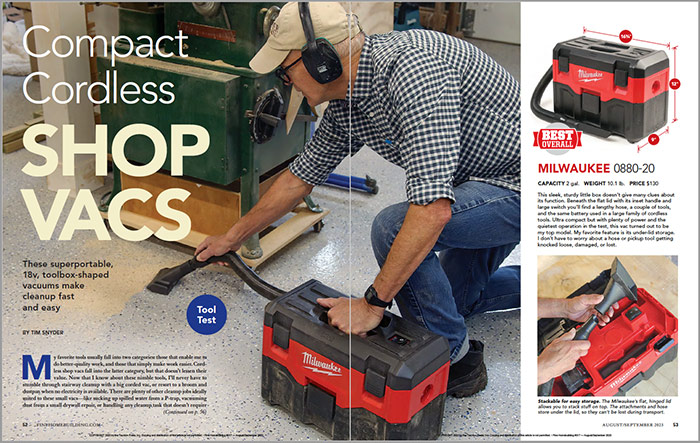
From Fine Homebuilding #317
To view the entire article, please click the View PDF button below.
RELATED STORIES


